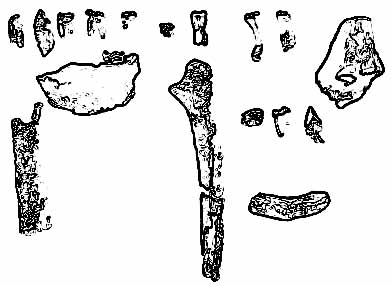Ardipithecus kadabba is an extinct hominin species that lived approximately 5.8 to 5.2 million years ago. It is an important discovery in the field of paleoanthropology, providing valuable insights into the early stages of hominin evolution. Here’s an exploration of the evolutionary significance of Ardipithecus kadabba:
Discovery and Location:
- Discovery Date: Fossils of Ardipithecus kadabba were discovered in the Middle Awash region of Ethiopia.

- Location: The Middle Awash region has proven to be a rich source of early hominin fossils, including those of Ardipithecus kadabba.
Fossil Finds:
- Type Specimen (Ardi): The holotype specimen of Ardipithecus kadabba is designated as Ardi (ARA-VP-6/500). Ardi is a partial skeleton, including fragments of skull, teeth, and limb bones.
- Other Specimens: Additional fossil finds include isolated teeth and postcranial elements from multiple individuals.
Morphological Features:
- Dental Morphology: Ardipithecus kadabba shares some dental characteristics with later hominins, such as reduced canine size compared to apes. However, the teeth also exhibit features more primitive than those of later hominins.
- Bipedal Adaptations: While the Ardipithecus kadabba fossils are fragmentary, some elements suggest bipedal adaptations. The structure of the toe bones, for example, indicates some capacity for upright walking.
Evolutionary Significance:
- Early Hominin Divergence: Ardipithecus kadabba is considered one of the earliest hominins, representing a period when the evolutionary divergence between hominins and other apes was taking place.
- Bipedalism: The bipedal adaptations observed in Ardipithecus kadabba are significant in the context of hominin evolution. Bipedalism is a key defining characteristic of hominins, and the presence of bipedal features in Ardipithecus kadabba suggests an early stage of this adaptation.
Environmental Context:
- Paleoenvironment: The Middle Awash region during the time of Ardipithecus kadabba was likely a mosaic of woodland and grassland habitats. Understanding the paleoenvironment provides insights into the ecological context in which early hominins lived.
- Ecological Niche: The coexistence of Ardipithecus kadabba with other hominins and fauna in the region raises questions about the ecological niche occupied by these early hominins and their interactions with the environment.
Ongoing Research:
- Continued Analysis: Ongoing research involves further analysis of the existing fossils, including advanced techniques such as imaging and comparative studies with other hominins.
- New Discoveries: Future discoveries in the Middle Awash region or other relevant sites may contribute additional fossils, expanding our understanding of Ardipithecus kadabba and its place in hominin evolution.
Comparative Studies:
- Comparison with Other Hominins: Comparative studies with other early hominins, such as Ardipithecus ramidus and Australopithecus species, help refine our understanding of the evolutionary relationships within the hominin lineage.
- Evolutionary Trends: Ardipithecus kadabba contributes to the identification of early evolutionary trends that eventually led to the emergence of more derived hominin species.
Ardipithecus kadabba is a crucial piece in the puzzle of early hominin evolution. Its bipedal features, primitive dental traits, and the ecological context provide important clues about the transitional phases in the evolutionary journey from our common ancestor with apes to the emergence of more advanced hominins. Ongoing research and new discoveries continue to deepen our understanding of Ardipithecus kadabba’s place in the complex tapestry of human evolutionary history.











